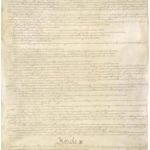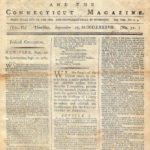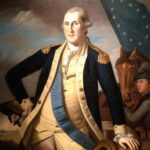The Equal Rights Amendment (ERA) stated, “Equality of Rights under the law shall not be denied or abridged by the United States or any state on account of sex.” This proposed amendment was passed by Congress in 1972 but failed to be ratified by three-fourths of the states. This lesson provides an overview of the proposed amendment, arguments for and against ratification and possible future steps toward ratification. This lesson can be used in a traditional or flipped classroom.
Bill of Rights Overview
The Bill of Rights is the first 10 amendments to the U.S. Constitution. These amendments guarantee essential rights and civil liberties, such as the freedom of religion, the right to free speech, the right to bear arms, trial by jury, and more, as well as reserving rights to the people and the states. After the Constitutional Convention, the absence of a bill of rights emerged as a central part of the ratification debates. Anti-Federalists, who opposed ratification, pointed to the missing bill of rights as a fatal flaw. Several states ratified the Constitution on the condition that a bill of rights be promptly added. Pop over to the National Constitution Center’s learning module to discover more!
Grade 3-5 Passing the Constitution, A Lesson in State Ratification
The purpose of this lesson is to introduce students to the ratification period that followed the Federal Constitutional Convention in Philadelphia. Through various activities to understand the what, why, who, where, and when of state ratification debates, students will see that state ratification of the Constitution was a critical element of establishing the new government’s legitimacy. Student activities throughout the day will help to build a State Ratification Bulletin Board.
Massachusetts and Constitutional Ratification

This video presents an overview of the crucial role played by Massachusetts in ratification of the Constitution. Federalists approached Governor John Hancock, and offered to support his political ambitions if he would support the new Constitution. At their behest, he offered—and the state constitution accepted—unconditional ratification with nine recommendatory amendments. Professor John Kaminiski notes this strategy was adopted by 6/7 of the remaining states, thus ensuring ratification.
Women Participate in the Ratification Debate

This short video assesses the role of “female politicians”: women who were interested in discussing the ratification politics and processes. The most visible of these was Mercy Otis Warren who, writing as “a Columbian Patriot,” opposed many aspects of the Constitution as undermining liberty. Professor Rosemarie Zagarri notes that many women throughout the country were thinking, talking, and reading about the ratification debates.
George Washington and Ratification

This short video suggests that George Washington’s vision for an American empire was intimately connected to his desire for constitutional ratification. Though he played no public role in the ratification debates, he was in constant contact with the Federalist supporters of the Constitution. As Professor W.B. Allen points out, Washington was aware of all the debates, but his influence was completely invisible to the public.
The Printers’ Role in Constitutional Ratification

This short video examines the role played by America’s newspaper printers in the ratification debates. Over 80% of all papers supported the new Constitution and played a significant role in supporting the Federalist cause. Professor John Kaminski explains how and why the newspapers helped to drive the ratification debates.
Key Individuals in Constitutional Ratification

This short video offers insights as to who were the most significant individuals in the ratification debates. Each state had its standouts: John Hancock in Massachusetts, Melancton Smith and Alexander Hamilton in New York; James Madison in Virginia. However, Professor John Kaminski concludes that George Washington, despite his reservations about becoming involved in the debate, was the most influential figure in securing ratification of the Constitution.
19th Amendment: Part 1 Podcast
The prominent figures and events of the women’s suffrage movement of the 19th and 20th centuries can feel almost mythical at times. That’s in part because they are, in fact, myths. The telling of the Nineteenth Amendment tends to stretch from a convention in Seneca Falls, New York, in 1848 to the amendment’s ratification in 1920, but the true story is a much longer one. We explore the myths and unveil the realities in part one of two episodes on the Nineteenth Amendment. Our guests are historians Martha Jones of John Hopkins University, Laura Free of Hobart and William Smith Colleges, and Lisa Tetrault of Carnegie Mellon University.
This short episode includes a one-page Graphic Organizer for students to take notes on while listening, as well as discussion questions on the back side.
Founding Documents: Federalist and Anti-Federalist Papers Podcast
Ten days after the Constitution was signed at the Old Philadelphia State House, an anonymous op-ed appeared in the New York Journal. Signed by “”Cato,” it cautioned readers of the new Constitution to take it with a grain of salt. Even the wisest of men, it warned, can make mistakes. This launched a public debate that would last months, pitting pro-Constitution Federalists against Constitution-wary Anti-Federalists. It was a battle for ratification, and it resulted in a glimpse into the minds of our Framers – and a concession that would come to define American identity.
Our guides through the minds of the Federalists and Anti-Federalists are Claire Griffin and Cheryl Cook-Kallio.
This short episode includes a one-page Graphic Organizer for students to take notes on while listening, as well as discussion questions on the back side.